Ping Tan
Simon Fraser University
Domain Randomization-Enhanced Depth Simulation and Restoration for Perceiving and Grasping Specular and Transparent Objects
Aug 07, 2022Abstract:Commercial depth sensors usually generate noisy and missing depths, especially on specular and transparent objects, which poses critical issues to downstream depth or point cloud-based tasks. To mitigate this problem, we propose a powerful RGBD fusion network, SwinDRNet, for depth restoration. We further propose Domain Randomization-Enhanced Depth Simulation (DREDS) approach to simulate an active stereo depth system using physically based rendering and generate a large-scale synthetic dataset that contains 130K photorealistic RGB images along with their simulated depths carrying realistic sensor noises. To evaluate depth restoration methods, we also curate a real-world dataset, namely STD, that captures 30 cluttered scenes composed of 50 objects with different materials from specular, transparent, to diffuse. Experiments demonstrate that the proposed DREDS dataset bridges the sim-to-real domain gap such that, trained on DREDS, our SwinDRNet can seamlessly generalize to other real depth datasets, e.g. ClearGrasp, and outperform the competing methods on depth restoration with a real-time speed. We further show that our depth restoration effectively boosts the performance of downstream tasks, including category-level pose estimation and grasping tasks. Our data and code are available at https://github.com/PKU-EPIC/DREDS
RenderNet: Visual Relocalization Using Virtual Viewpoints in Large-Scale Indoor Environments
Jul 26, 2022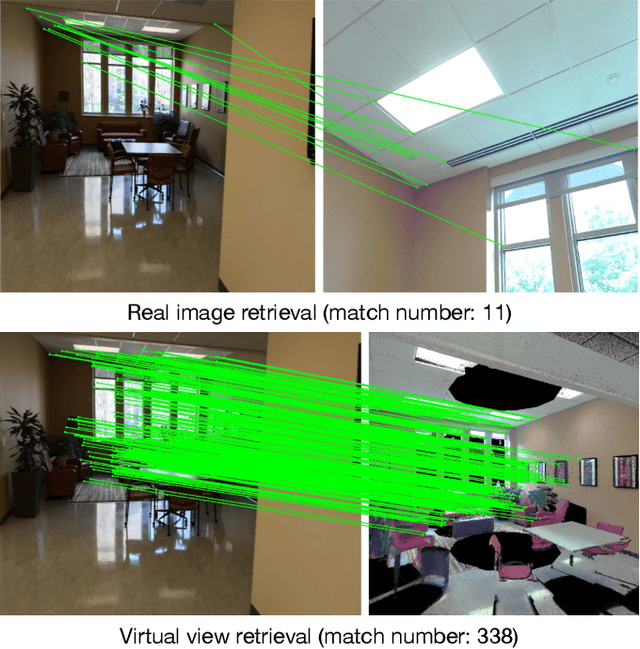
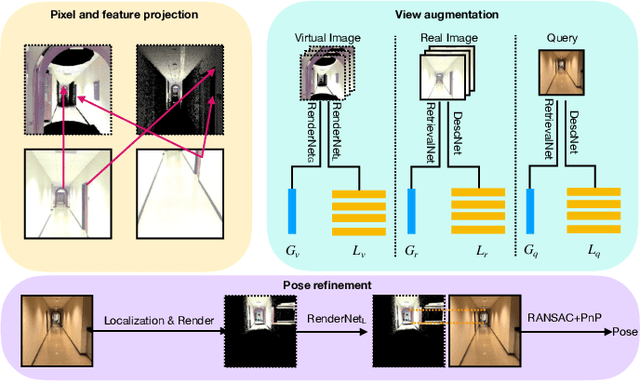
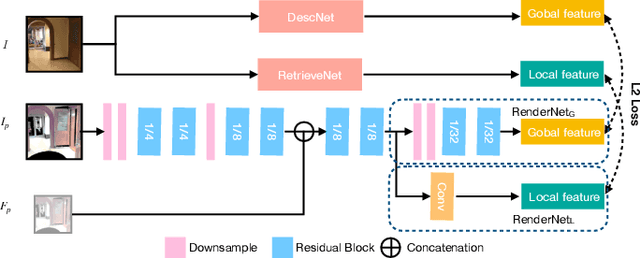
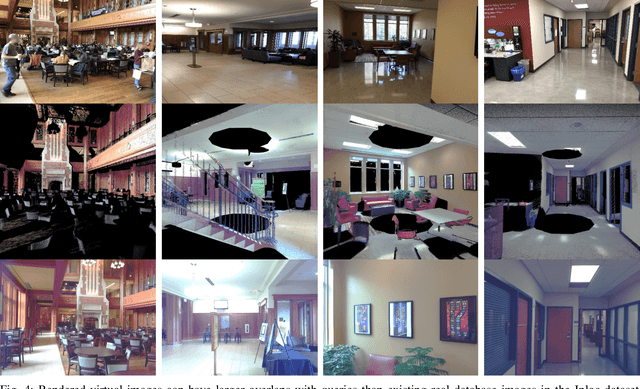
Abstract:Visual relocalization has been a widely discussed problem in 3D vision: given a pre-constructed 3D visual map, the 6 DoF (Degrees-of-Freedom) pose of a query image is estimated. Relocalization in large-scale indoor environments enables attractive applications such as augmented reality and robot navigation. However, appearance changes fast in such environments when the camera moves, which is challenging for the relocalization system. To address this problem, we propose a virtual view synthesis-based approach, RenderNet, to enrich the database and refine poses regarding this particular scenario. Instead of rendering real images which requires high-quality 3D models, we opt to directly render the needed global and local features of virtual viewpoints and apply them in the subsequent image retrieval and feature matching operations respectively. The proposed method can largely improve the performance in large-scale indoor environments, e.g., achieving an improvement of 7.1\% and 12.2\% on the Inloc dataset.
Unseen Object 6D Pose Estimation: A Benchmark and Baselines
Jun 23, 2022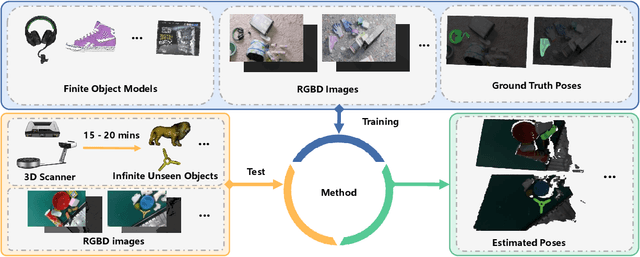
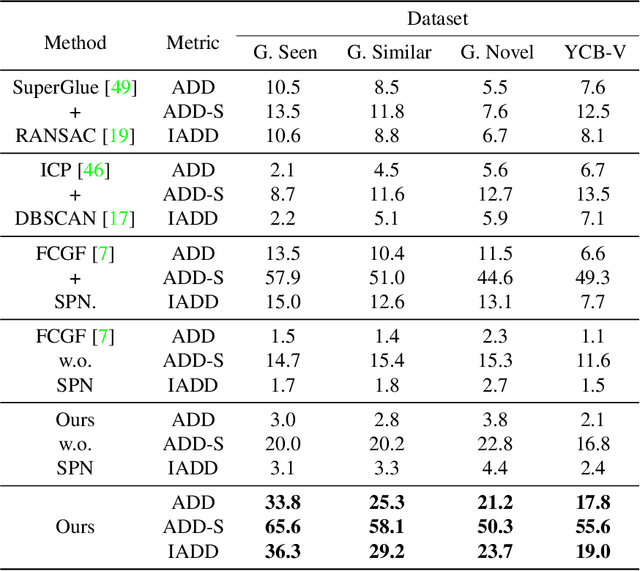
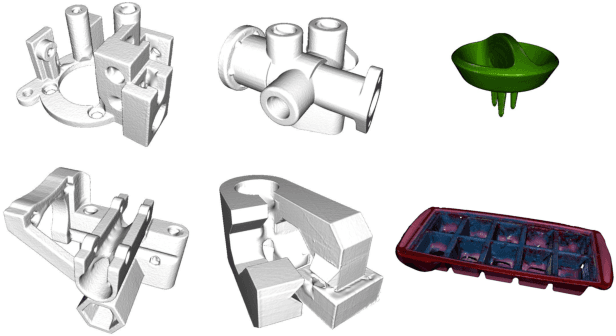
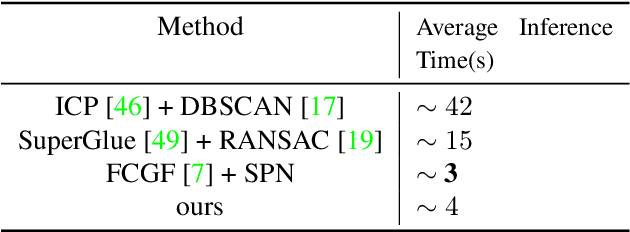
Abstract:Estimating the 6D pose for unseen objects is in great demand for many real-world applications. However, current state-of-the-art pose estimation methods can only handle objects that are previously trained. In this paper, we propose a new task that enables and facilitates algorithms to estimate the 6D pose estimation of novel objects during testing. We collect a dataset with both real and synthetic images and up to 48 unseen objects in the test set. In the mean while, we propose a new metric named Infimum ADD (IADD) which is an invariant measurement for objects with different types of pose ambiguity. A two-stage baseline solution for this task is also provided. By training an end-to-end 3D correspondences network, our method finds corresponding points between an unseen object and a partial view RGBD image accurately and efficiently. It then calculates the 6D pose from the correspondences using an algorithm robust to object symmetry. Extensive experiments show that our method outperforms several intuitive baselines and thus verify its effectiveness. All the data, code and models will be made publicly available. Project page: www.graspnet.net/unseen6d
RCP: Recurrent Closest Point for Scene Flow Estimation on 3D Point Clouds
May 24, 2022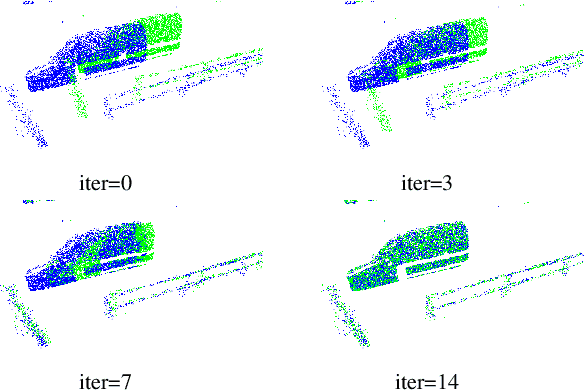
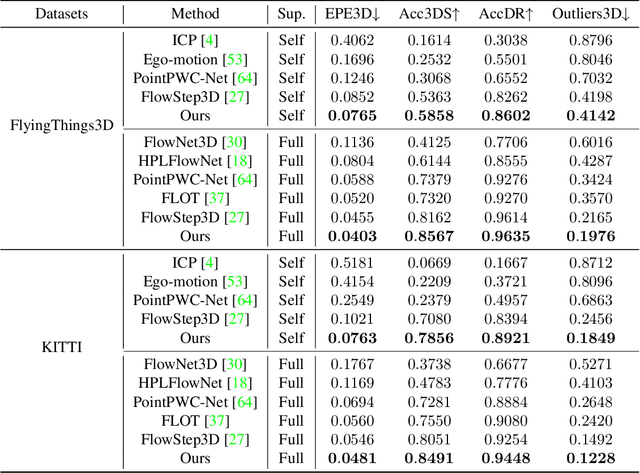
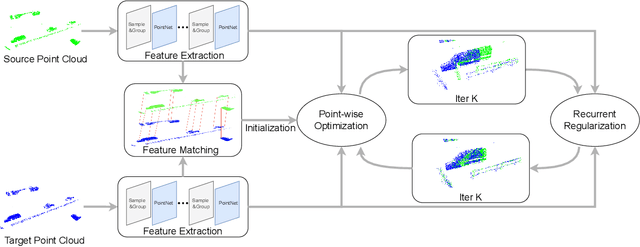
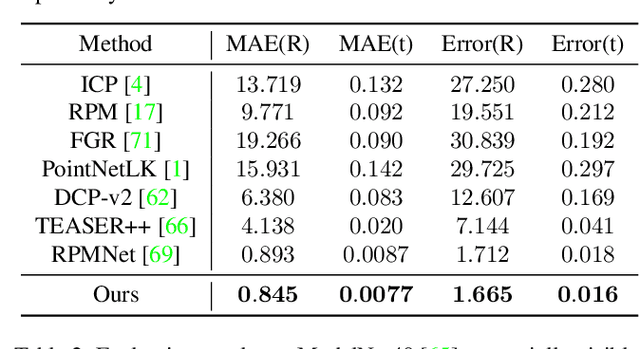
Abstract:3D motion estimation including scene flow and point cloud registration has drawn increasing interest. Inspired by 2D flow estimation, recent methods employ deep neural networks to construct the cost volume for estimating accurate 3D flow. However, these methods are limited by the fact that it is difficult to define a search window on point clouds because of the irregular data structure. In this paper, we avoid this irregularity by a simple yet effective method.We decompose the problem into two interlaced stages, where the 3D flows are optimized point-wisely at the first stage and then globally regularized in a recurrent network at the second stage. Therefore, the recurrent network only receives the regular point-wise information as the input. In the experiments, we evaluate the proposed method on both the 3D scene flow estimation and the point cloud registration task. For 3D scene flow estimation, we make comparisons on the widely used FlyingThings3D and KITTIdatasets. For point cloud registration, we follow previous works and evaluate the data pairs with large pose and partially overlapping from ModelNet40. The results show that our method outperforms the previous method and achieves a new state-of-the-art performance on both 3D scene flow estimation and point cloud registration, which demonstrates the superiority of the proposed zero-order method on irregular point cloud data.
Efficient Virtual View Selection for 3D Hand Pose Estimation
Mar 29, 2022
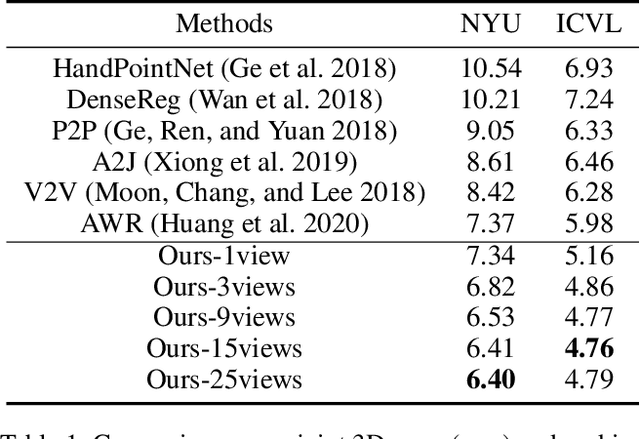

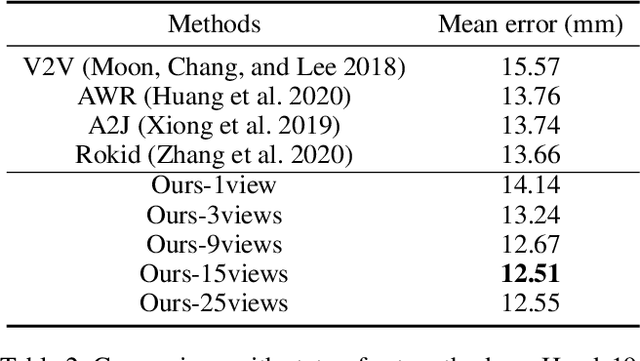
Abstract:3D hand pose estimation from single depth is a fundamental problem in computer vision, and has wide applications.However, the existing methods still can not achieve satisfactory hand pose estimation results due to view variation and occlusion of human hand. In this paper, we propose a new virtual view selection and fusion module for 3D hand pose estimation from single depth.We propose to automatically select multiple virtual viewpoints for pose estimation and fuse the results of all and find this empirically delivers accurate and robust pose estimation. In order to select most effective virtual views for pose fusion, we evaluate the virtual views based on the confidence of virtual views using a light-weight network via network distillation. Experiments on three main benchmark datasets including NYU, ICVL and Hands2019 demonstrate that our method outperforms the state-of-the-arts on NYU and ICVL, and achieves very competitive performance on Hands2019-Task1, and our proposed virtual view selection and fusion module is both effective for 3D hand pose estimation.
AutoAvatar: Autoregressive Neural Fields for Dynamic Avatar Modeling
Mar 25, 2022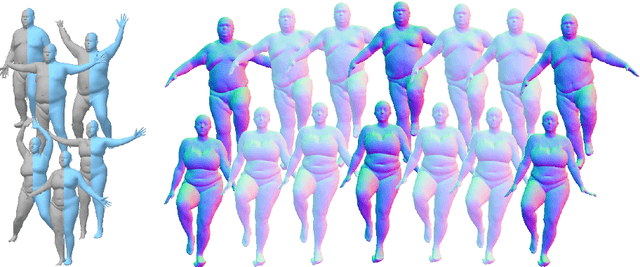
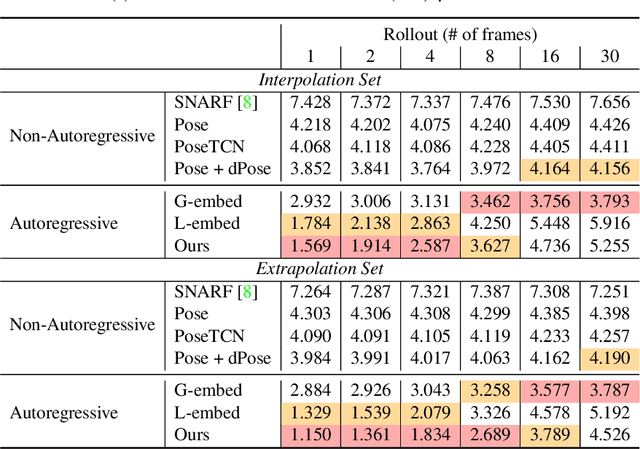

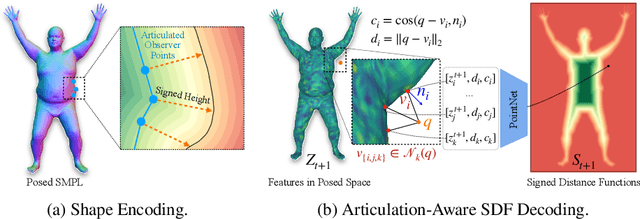
Abstract:Neural fields such as implicit surfaces have recently enabled avatar modeling from raw scans without explicit temporal correspondences. In this work, we exploit autoregressive modeling to further extend this notion to capture dynamic effects, such as soft-tissue deformations. Although autoregressive models are naturally capable of handling dynamics, it is non-trivial to apply them to implicit representations, as explicit state decoding is infeasible due to prohibitive memory requirements. In this work, for the first time, we enable autoregressive modeling of implicit avatars. To reduce the memory bottleneck and efficiently model dynamic implicit surfaces, we introduce the notion of articulated observer points, which relate implicit states to the explicit surface of a parametric human body model. We demonstrate that encoding implicit surfaces as a set of height fields defined on articulated observer points leads to significantly better generalization compared to a latent representation. The experiments show that our approach outperforms the state of the art, achieving plausible dynamic deformations even for unseen motions. https://zqbai-jeremy.github.io/autoavatar
A Real World Dataset for Multi-view 3D Reconstruction
Mar 22, 2022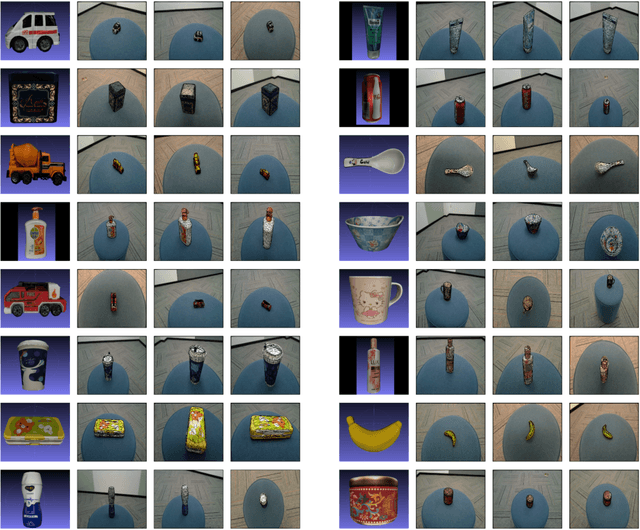

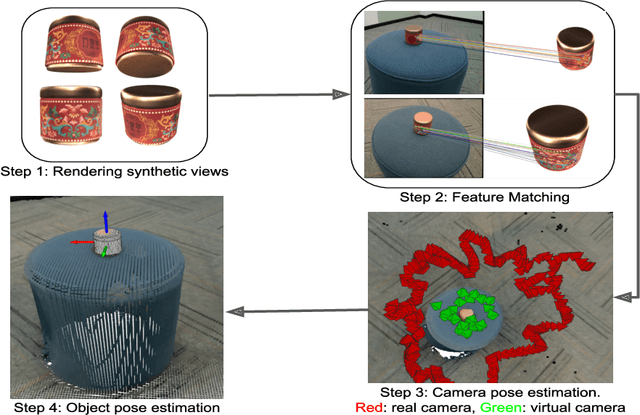

Abstract:We present a dataset of 371 3D models of everyday tabletop objects along with their 320,000 real world RGB and depth images. Accurate annotations of camera poses and object poses for each image are performed in a semi-automated fashion to facilitate the use of the dataset for myriad 3D applications like shape reconstruction, object pose estimation, shape retrieval etc. We primarily focus on learned multi-view 3D reconstruction due to the lack of appropriate real world benchmark for the task and demonstrate that our dataset can fill that gap. The entire annotated dataset along with the source code for the annotation tools and evaluation baselines will be made publicly available.
NeW CRFs: Neural Window Fully-connected CRFs for Monocular Depth Estimation
Mar 03, 2022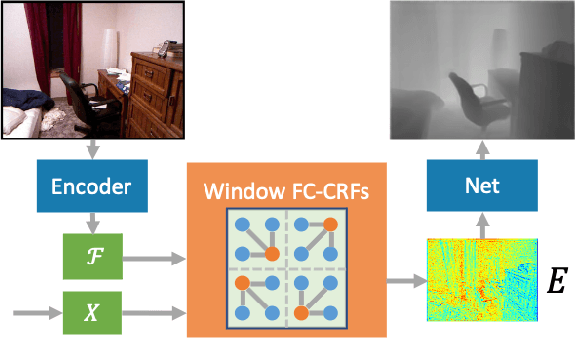
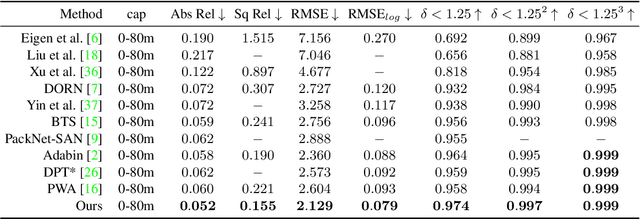
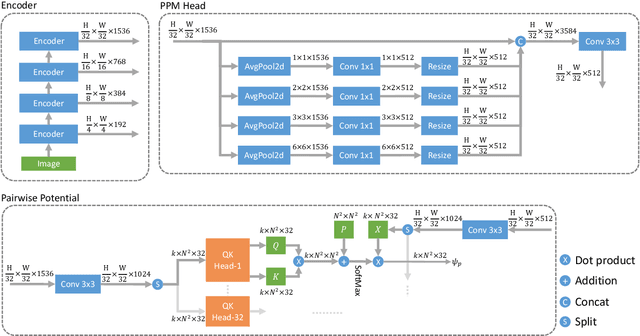
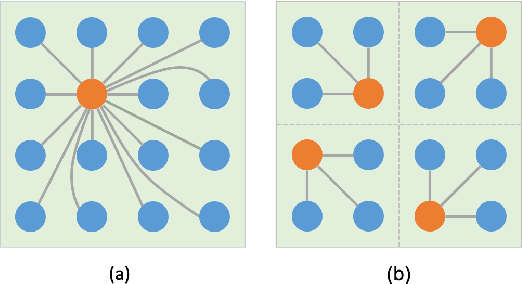
Abstract:Estimating the accurate depth from a single image is challenging since it is inherently ambiguous and ill-posed. While recent works design increasingly complicated and powerful networks to directly regress the depth map, we take the path of CRFs optimization. Due to the expensive computation, CRFs are usually performed between neighborhoods rather than the whole graph. To leverage the potential of fully-connected CRFs, we split the input into windows and perform the FC-CRFs optimization within each window, which reduces the computation complexity and makes FC-CRFs feasible. To better capture the relationships between nodes in the graph, we exploit the multi-head attention mechanism to compute a multi-head potential function, which is fed to the networks to output an optimized depth map. Then we build a bottom-up-top-down structure, where this neural window FC-CRFs module serves as the decoder, and a vision transformer serves as the encoder. The experiments demonstrate that our method significantly improves the performance across all metrics on both the KITTI and NYUv2 datasets, compared to previous methods. Furthermore, the proposed method can be directly applied to panorama images and outperforms all previous panorama methods on the MatterPort3D dataset. The source code of our method will be made public.
VoLux-GAN: A Generative Model for 3D Face Synthesis with HDRI Relighting
Jan 13, 2022
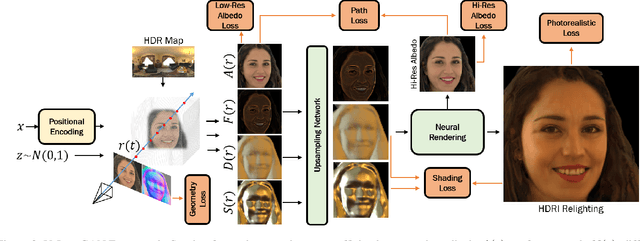

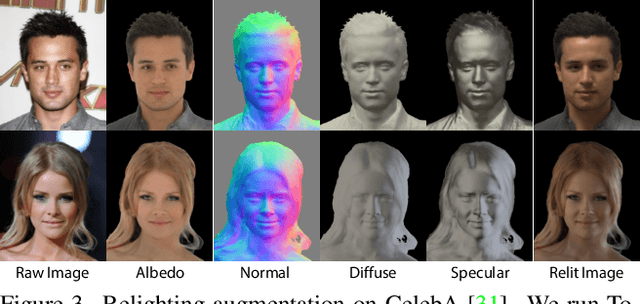
Abstract:We propose VoLux-GAN, a generative framework to synthesize 3D-aware faces with convincing relighting. Our main contribution is a volumetric HDRI relighting method that can efficiently accumulate albedo, diffuse and specular lighting contributions along each 3D ray for any desired HDR environmental map. Additionally, we show the importance of supervising the image decomposition process using multiple discriminators. In particular, we propose a data augmentation technique that leverages recent advances in single image portrait relighting to enforce consistent geometry, albedo, diffuse and specular components. Multiple experiments and comparisons with other generative frameworks show how our model is a step forward towards photorealistic relightable 3D generative models.
GAT-CADNet: Graph Attention Network for Panoptic Symbol Spotting in CAD Drawings
Jan 10, 2022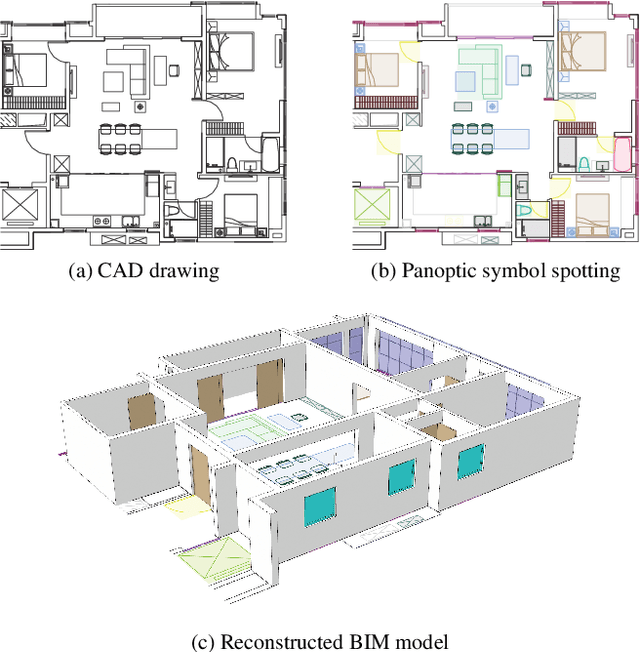

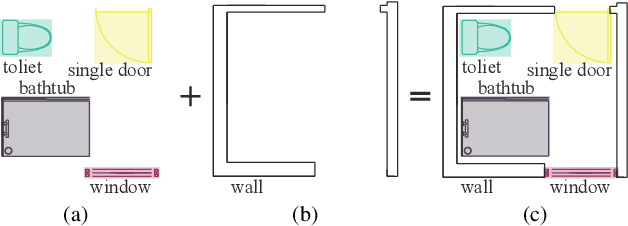
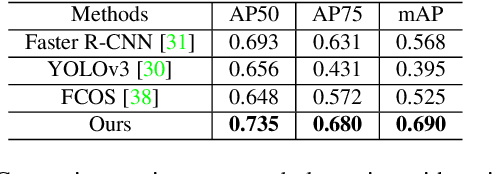
Abstract:Spotting graphical symbols from the computer-aided design (CAD) drawings is essential to many industrial applications. Different from raster images, CAD drawings are vector graphics consisting of geometric primitives such as segments, arcs, and circles. By treating each CAD drawing as a graph, we propose a novel graph attention network GAT-CADNet to solve the panoptic symbol spotting problem: vertex features derived from the GAT branch are mapped to semantic labels, while their attention scores are cascaded and mapped to instance prediction. Our key contributions are three-fold: 1) the instance symbol spotting task is formulated as a subgraph detection problem and solved by predicting the adjacency matrix; 2) a relative spatial encoding (RSE) module explicitly encodes the relative positional and geometric relation among vertices to enhance the vertex attention; 3) a cascaded edge encoding (CEE) module extracts vertex attentions from multiple stages of GAT and treats them as edge encoding to predict the adjacency matrix. The proposed GAT-CADNet is intuitive yet effective and manages to solve the panoptic symbol spotting problem in one consolidated network. Extensive experiments and ablation studies on the public benchmark show that our graph-based approach surpasses existing state-of-the-art methods by a large margin.
 Add to Chrome
Add to Chrome Add to Firefox
Add to Firefox Add to Edge
Add to Edge